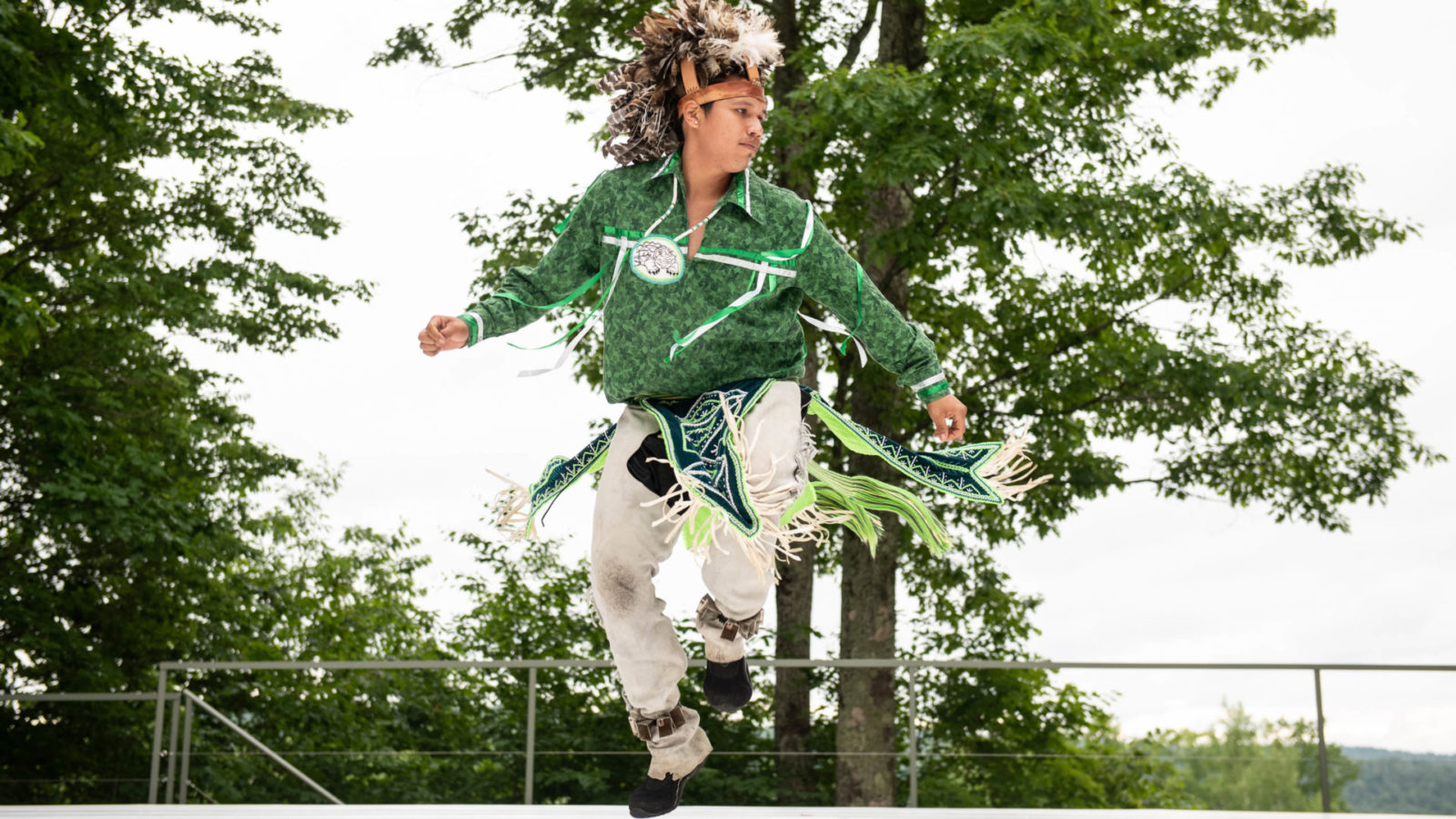The dancer holding the stage with his solo is keeping a beat in time to a tenor voice and a live drum. His father and grandfather are singing here tonight, and he has known the rhythm literally since before he could walk — and he is two years old. Elijah George is carrying on a family tradition.
And then he sets off to walk out the door of the Perles Center, fearlessly, into the trees at dusk. His parents gently reclaim him, and it’s powerful to see their family together, as it’s powerful to hear Monique Tyndall, the cultural affairs director for the Mohican Nation, greet everyone here in Mohican tonight. Three generations of Iroquois Traditional Dancers are here on the first night of Jacob’s Pillow’s 2022 festival, opening an evening of Eastern Woodland Dances.
Larry Spotted Crow Mann and Annawon Weeden welcome them in. They have curated the night together — Mann is a Nipmuc awardwinning writer, playwright and poet, teacher and storyteller and co-director of the Ohketeau Cultural Center, and Weeden an enrolled member of his mother’s Mashpee Wampanoag community on Cape Cod, a teacher and performer who holds a Congressional Medal of Honor as a culture bearer for the Northeast.
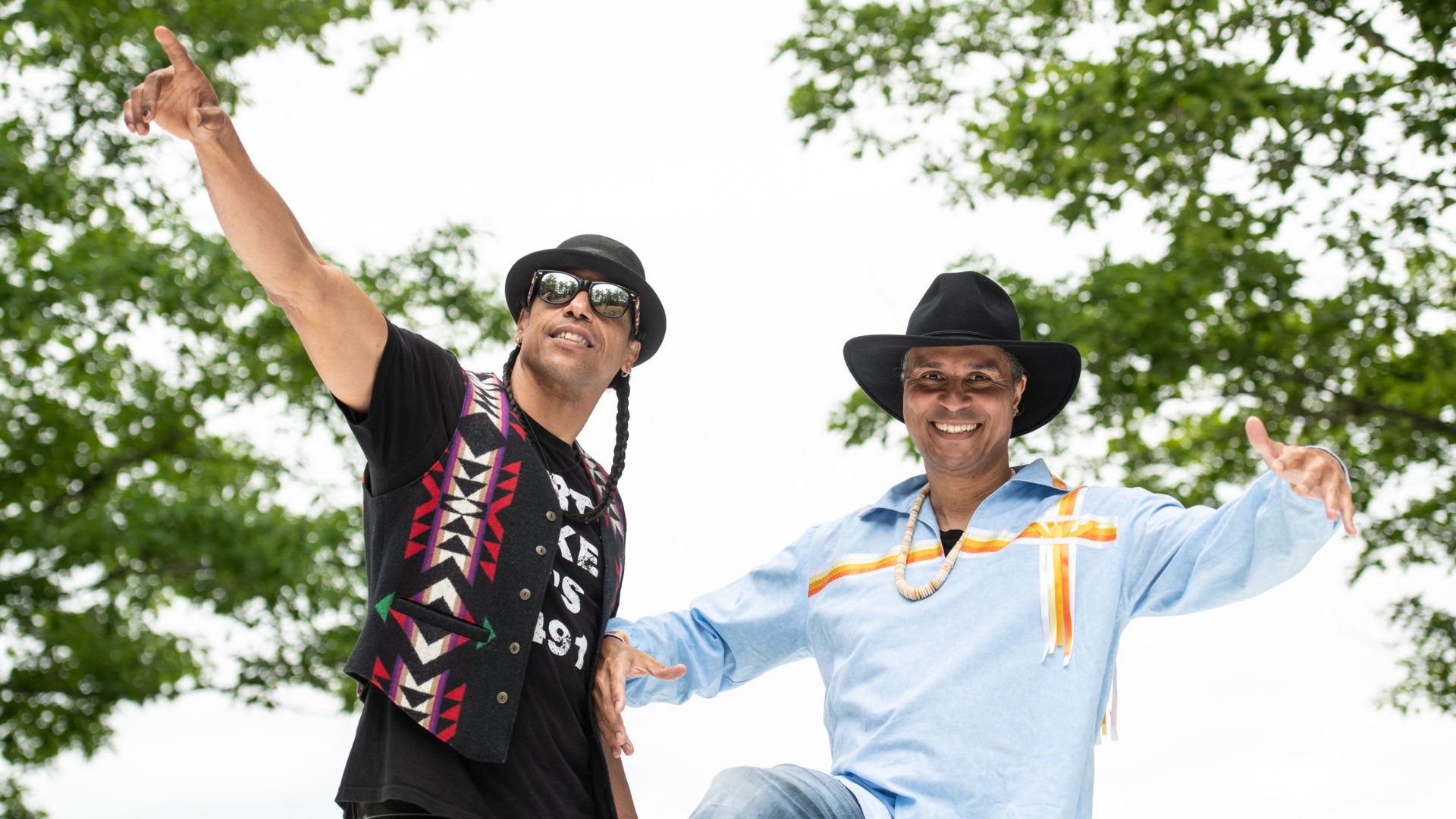
Annawon Weeden and Larry Spotted Crow Mann laugh together on the outdoor stage at Jacob's Pillow. Press photo courtesy of the Pillow
Al George leads his family of dancers with his voice, singing the rhythms to guide them. He is Cayuga, Wampum holder and faithkeeper of the Allegany Seneca at the Coldspring Longhouse on the Allegany reservation, and he tells us his son, Jake George, Elijah’s father, has learned to dance the way Elijah and his brothers and sisters are learning now — coming to performances together.
Brandon, Al’s seven-year-old grandson, performs with unselfconsious energy, and
and Al’s nine-year-old grand-daughter steps high with a glowing confidence. The tradition moves between fathers and mothers, daughters and sons, and they are holding it together against the odds — for many generations, they tell us, even into the 1970s, their dances were banned in this country, on their own lands.
Now Al is singing for his son. Jake moves with decisive steps like a heartbeat,
and then he and his father speed up the rhythm together, in breath and drumming and footwork as percussive as summer rain.

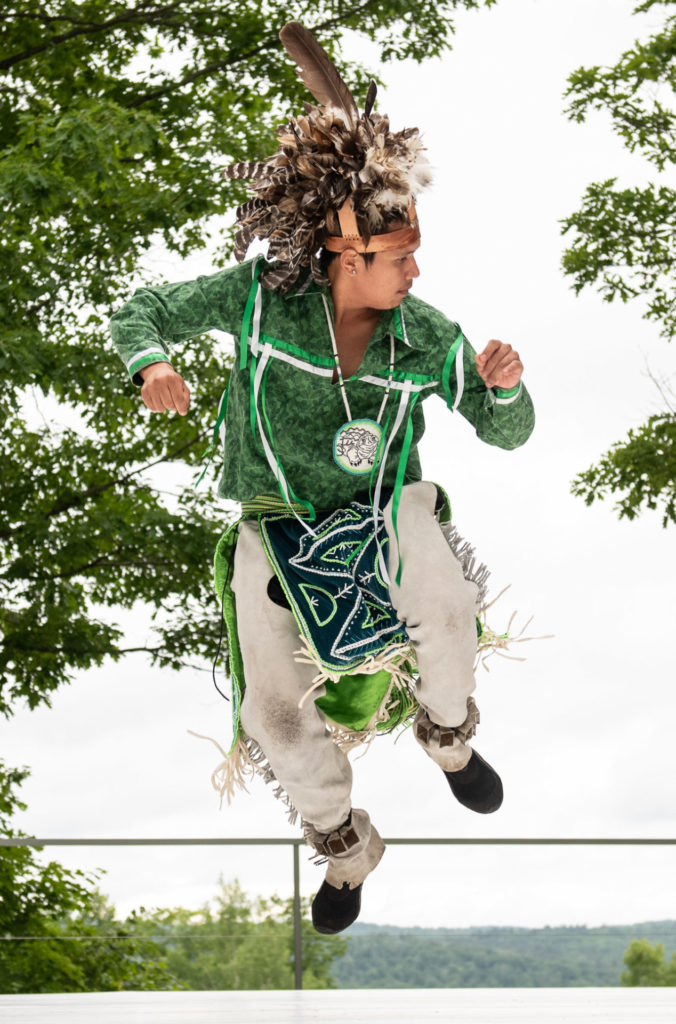
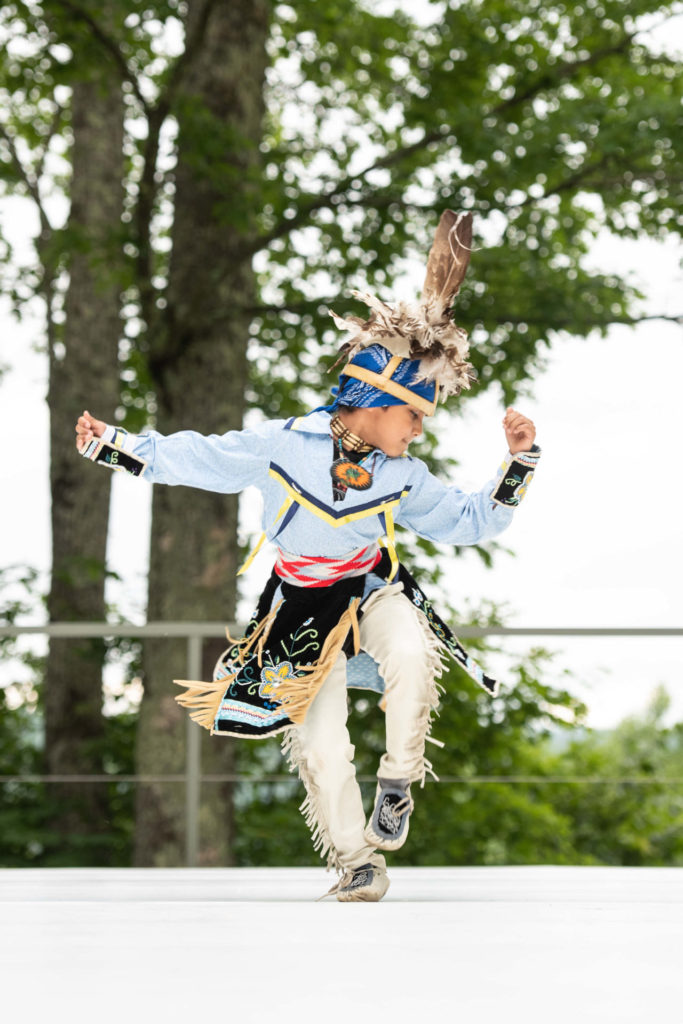
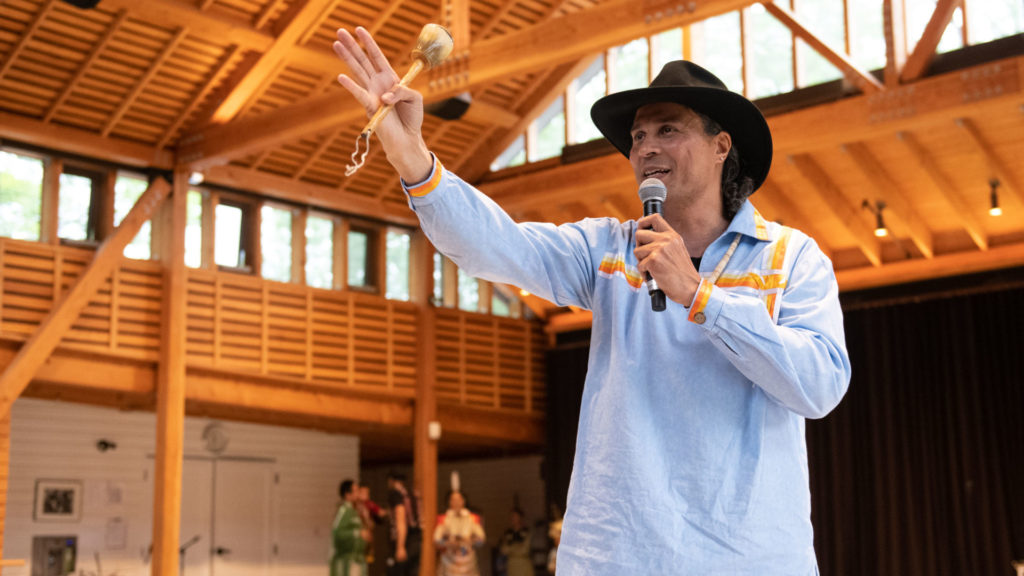
And I can only imagine how it would feel to see a community perform these dances together. Though they invite the women in the room to come up and join them in procession, and the room moves up in a wave — Jake moves with agile speed, and I wonder what it would be like for a circle of dancers to share this energy, brothers and fathers and uncles raising their voices on a summer night.
And then Al invites Acosia Red Elk to lead their family’s last dance. She is a world-champion jingle dancer, waiting to come on for her own performance, and she steps in with the procession in their farewell.
She is performing a traditional dance of the Ojibwe, as she has performed it actoss the country. She comes from the confederated nations of the Umatilla, Cayuse and Walla Walla, she tells us, peoples of the Pacific Northwest, and also Nez Perce and Colville, and on her mother’s side, among Scots and Scandinavian, some Seneca and Micmac.
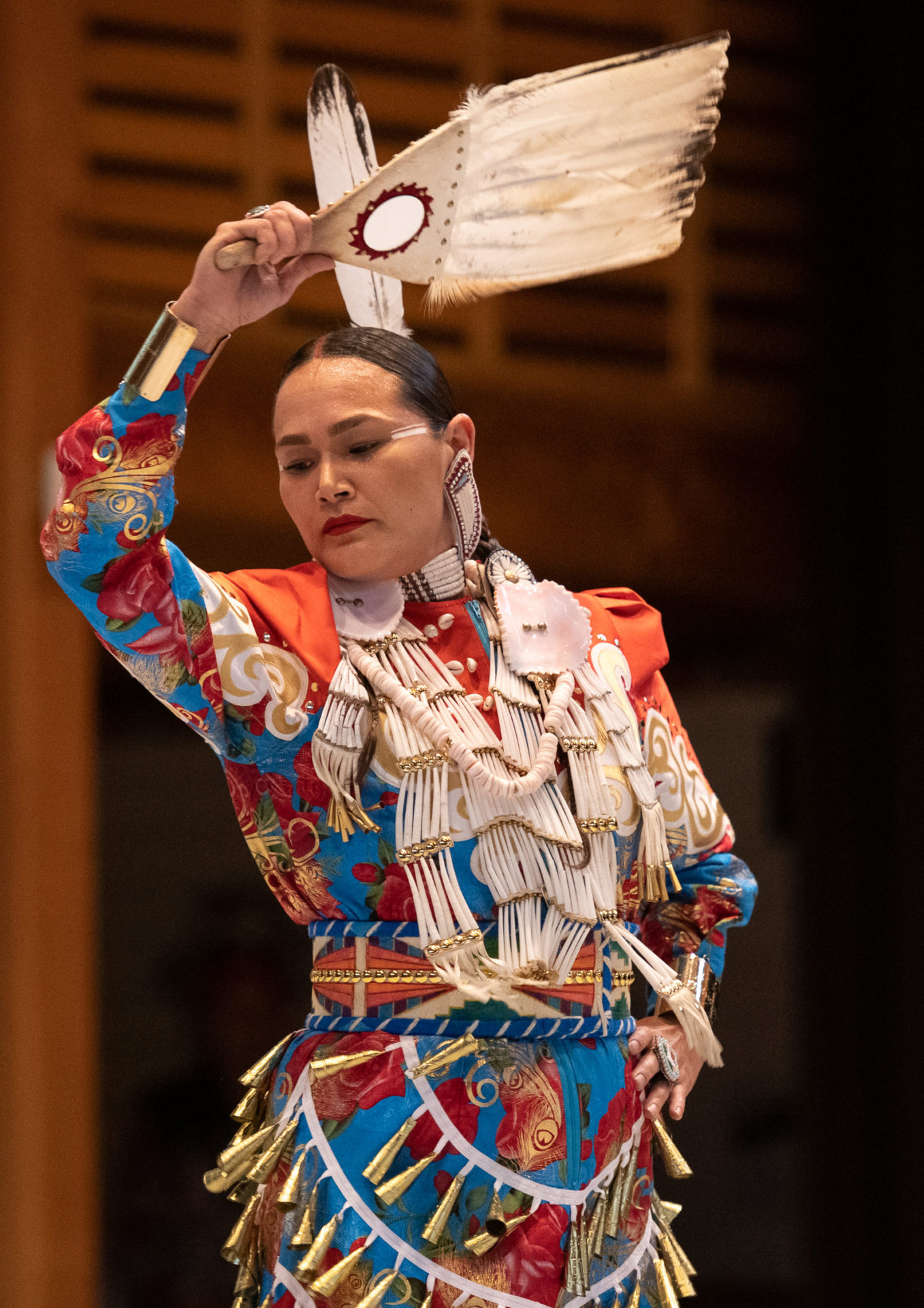
World champion jingle dancer Acosia Red Elk performs at Jacob's Pillow Dance Festival. Press photo courtesy of the Pillow
She tells us an origin story for the jingle dance, and it feels timely now. In a time of illness, a young girl was near death, and her father learned in a dream of a sound that could heal. Women did not often dance publicly in that time and place, and yet she danced, in a dress hung with beads that set off a high humming chime.
It’s the sound of the Northern Lights, Red Elk tells us, and it can heal at a cellular level — this knowledge is traditional and contemporary at the same time. She invites us to imagine a hundred or a thousand women dancing as she is dancing, and the sounds of their movement cascading together.
She combines traditional steps and modern improvisations, she says, lifting her feet high, gliding backward with a hand on her hip and turning, moving fluidly through space in new ways. As she performs her own choreography to music by TBZ Tha Boyz, Northern Cree, I catch a glimpse of a young woman of the traditional dancers following her movements from backstage.
Suddenly the rhythm is coming from the front of the room, and dancers and drummers are coming past us in procession. The Warwick Gombey Troupe of Bermuda is here, bringing performers of West African and Caribbean descent, and Wampanoag, Pequot, Narragansett and Mohican.
Weeden explains the convergence in their families, and the story is direct and painful. In the 1600s, Europeans on the Connecticut coast killed many of the people living there and forced many more onto slave ships going south.
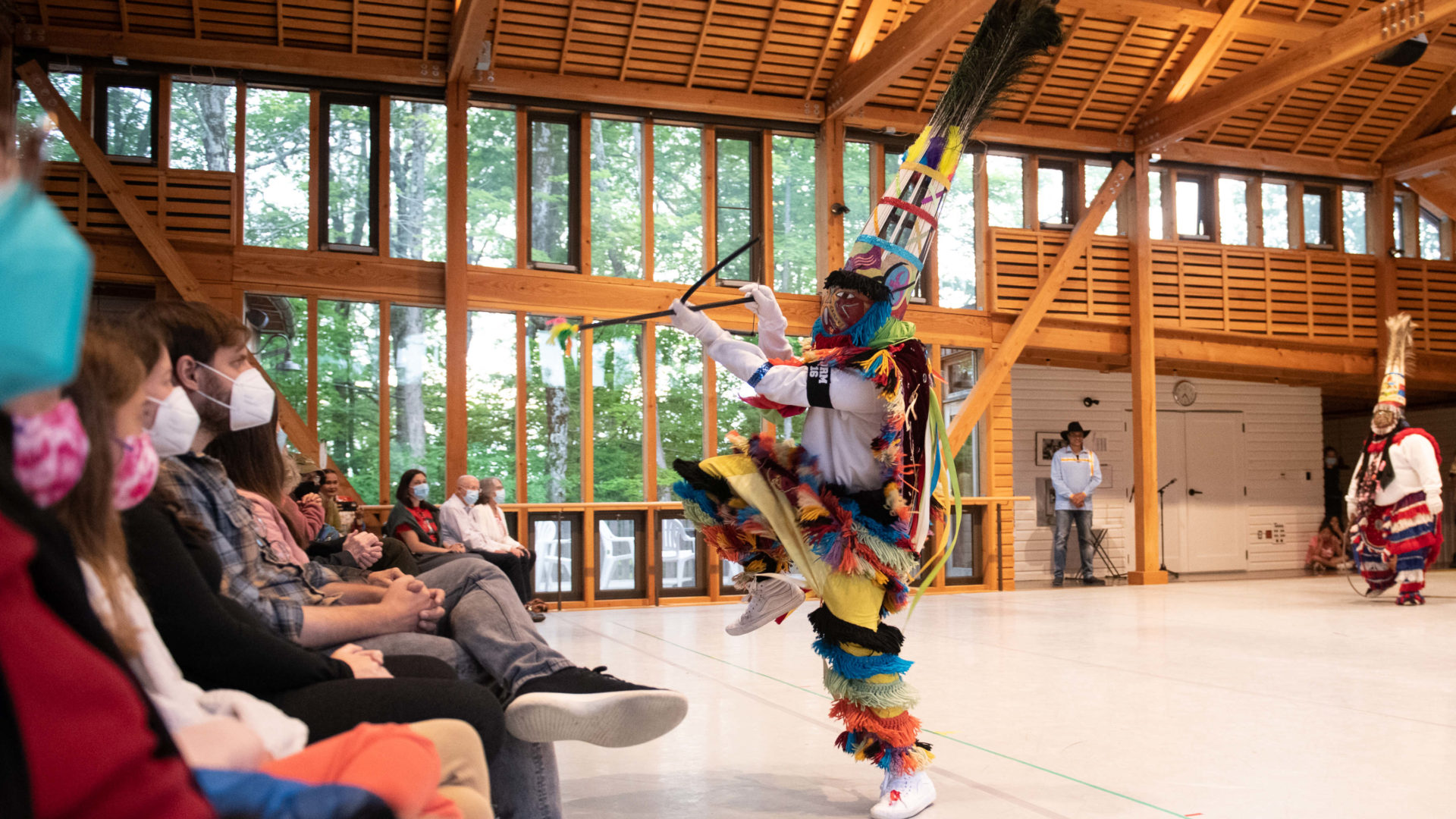
A masked dancer in the Warwick Gombey Troupe from Bermuda performs at Jacob's Pillow Dance Festival. Press photo courtesy of the Pillow
I hear that and it hits home, because I was born on that coast. Some of my forebears have lived there for a long time. Those salt marshes and granite ledges and hemlock woods undersewn with mountain laurel are the places that raised me … and the water of the sound, and the small crescent of beach where my brother and sister and I would look for jingle shells. They are translucent and smooth and the color of sunrise.
It felt important to welcome these dancers home, Weeden said, and the Pillow’s artistic director said too, when they opened America(na) to me later that night, in the first summer performance on the main stage. Here they are on a summer night, drummers and dancers in carnival masks, and we can see their kinship to the dancers that have come before in the clothing they wear, that they have made themselves.
Irwin and Trae Trott, Omar Barnett, Alan Looby, Harley Place, Donovan dams, Devondae Warner, Kahni Place and Chaziah Brown fill the room with sound, drums crashing like surf. They move together, trading solos, handing the dance between them.
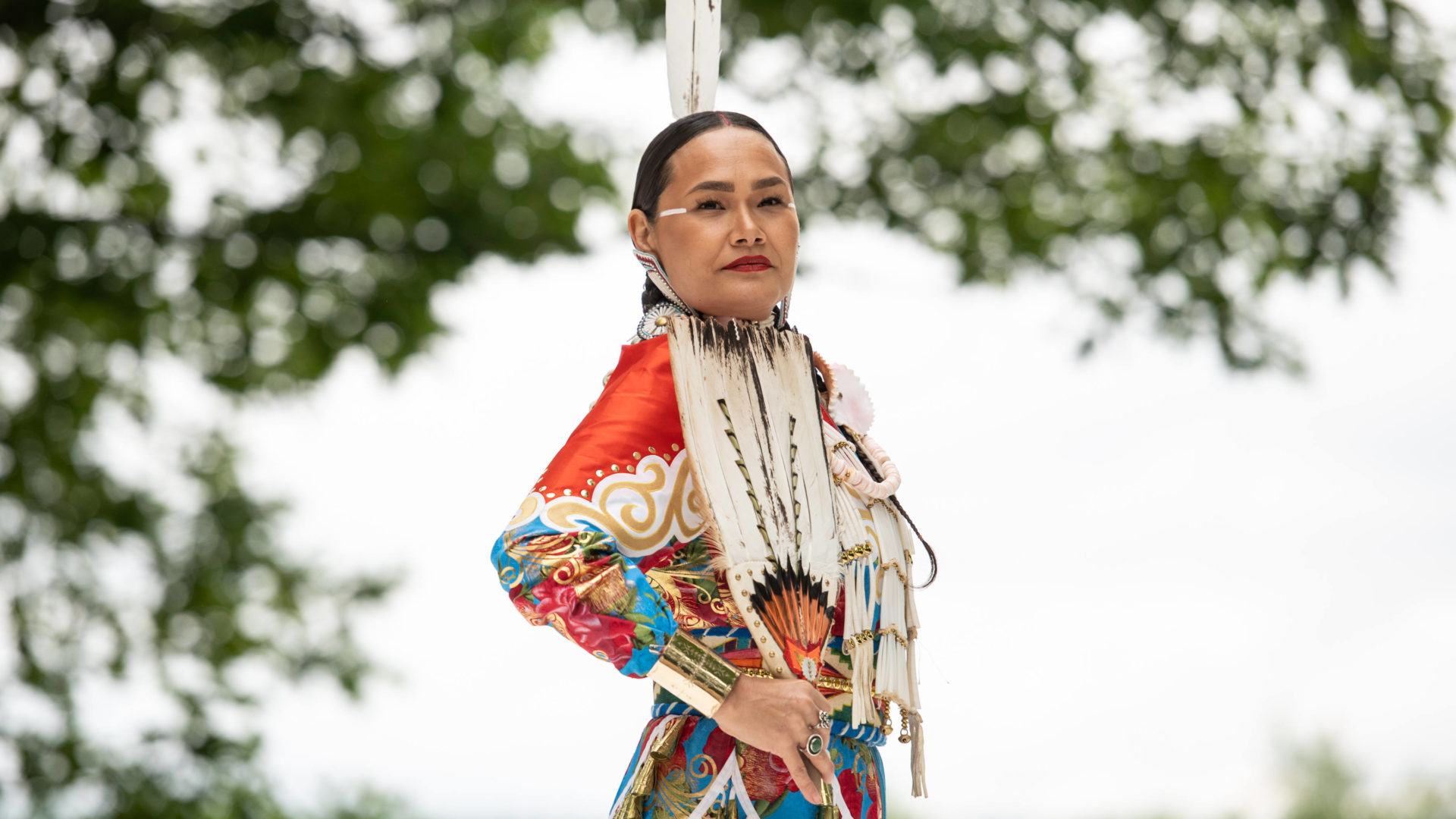
World champion jingle dancer Acosia Red Elk performs at Jacob's Pillow Dance Festival. Press photo courtesy of the Pillow
They announce their dances with stories that weave past and present together — like John Canoe, a European name for a man who stood against European invasion. He was an Ahan chief of the Ahanta people in Ghana, and I haven’t yet found his own name in his own language, but John Canoe has become a form of dance and music and a festival in the Caribean islands, with roots in the strength of enslaved people who held their own music and stories through so many hard years.
For them too, movement has carried through — as the George family passes on their traditions through generations, and Red Elk re-imagines her movements as she honors them. Dance carries on into the future.
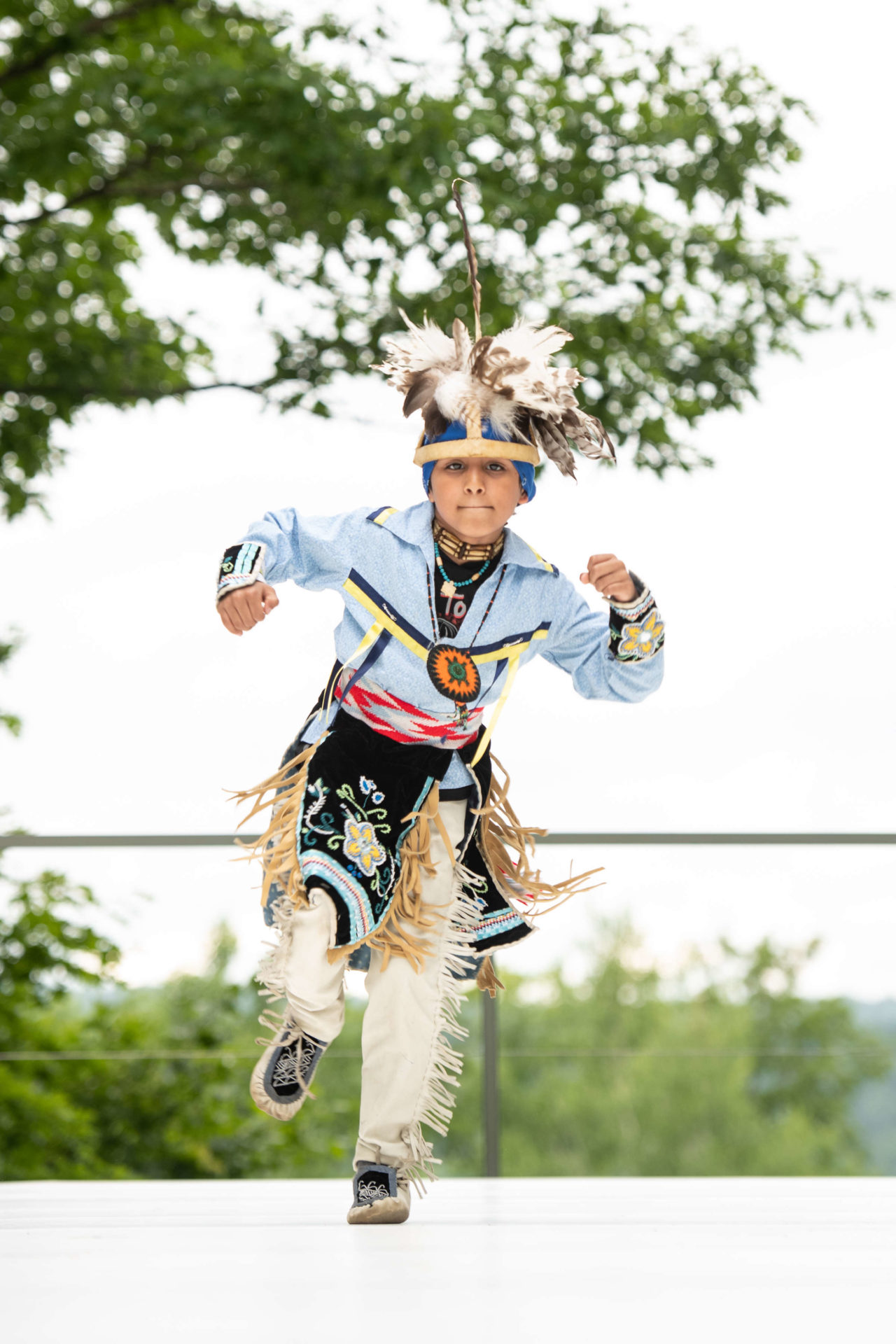
Traditional Iroquois Dancer Brandon George, age 7, performs at Jacob's Pillow Dance Festival. Press photo courtesy of the Pillow

